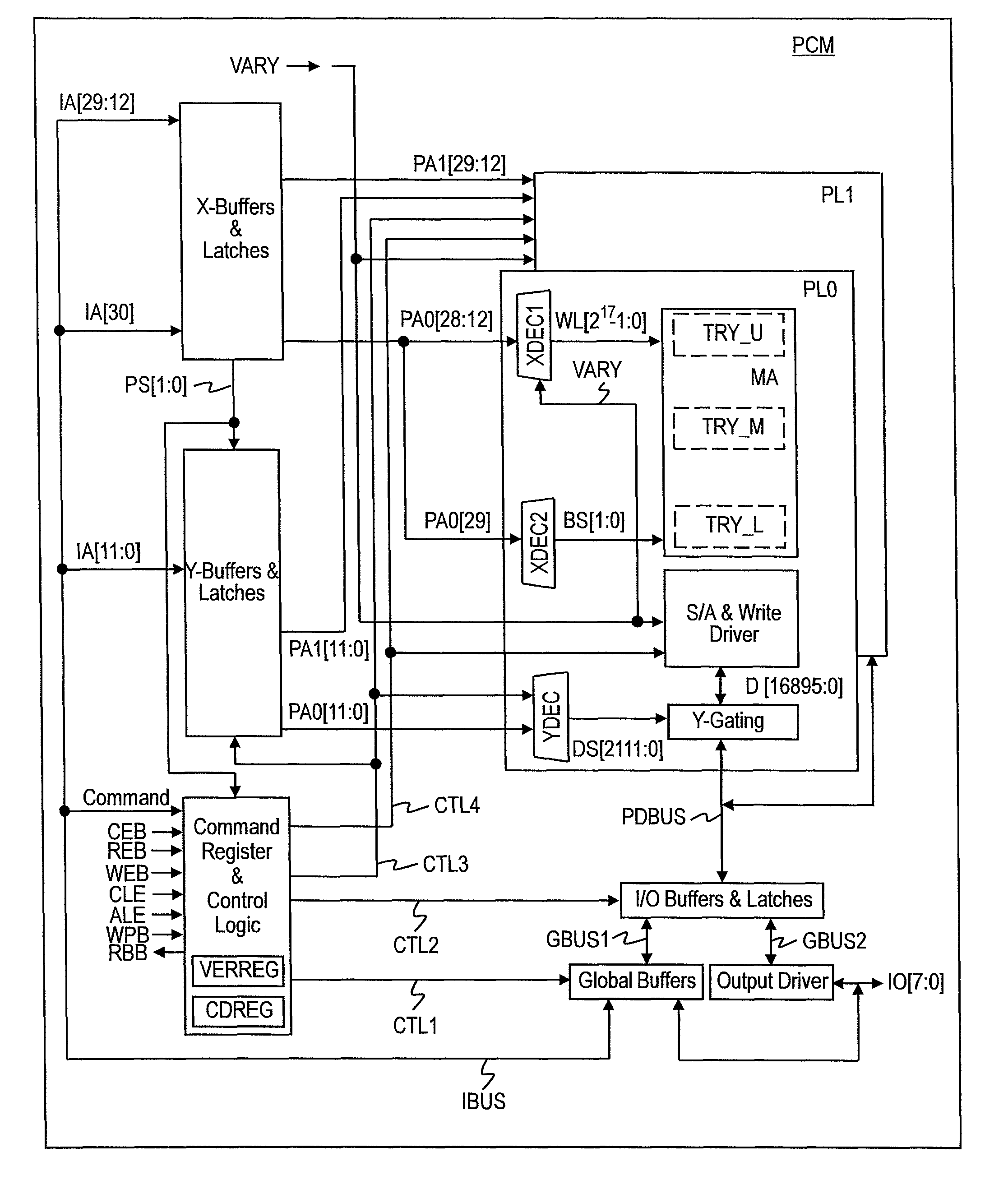Semiconductor device
a semiconductor and memory system technology, applied in the direction of information storage, static storage, digital storage, etc., can solve the problems of inability to achieve high-speed performance, inability to achieve sufficient display of high-speed performance, and inability to process, etc., to achieve data writing/rewriting with small variance or no fluctuation, and easy increase in the difference in the number of executed writing operations.
- Summary
- Abstract
- Description
- Claims
- Application Information
AI Technical Summary
Benefits of technology
Problems solved by technology
Method used
Image
Examples
first embodiment
[0046]A first embodiment is directed to a configuration and a method for performing writing in a predetermined area of a memory array to optimize writing conditions when power is turned ON for a phase-change memory.
[0047]Overall System Configuration
[0048]FIG. 1 illustrates an entire system of a semiconductor device according to the first embodiment of this invention. The system of this embodiment includes a central processing unit CPU, a phase-change memory PCM, and a memory controller MEM-CONT for receiving an instruction from the central processing unit CPU to control the phase-change memory PCM. The central processing unit CPU and the memory controller MEM-CONT are formed on the same semiconductor chip SOC. The memory controller MEM-CONT includes a management table TABLE and a control register CONT-REG. The management table TABLE includes a condition table CDTABLE. The central processing unit CPU and the phase-change memory PCM are coupled to each other via an address bus PADD an...
second embodiment
[0087]Next, a second embodiment of this invention is described. A phase-change system of the second embodiment includes an address replace circuit REP in a memory controller MEM_CONT as illustrated in FIG. 11. The address replace circuit REP checks whether writing fails when the writing is performed in a phase-change memory PCM. When the writing fails, the address replace circuit REP manages the address as a defect address, and manages which address the defect address is converted into. The address replace circuit REP registers a defect address identified by testing during manufacturing and its replace address.
[0088]In a phase-change element, even in the case of writing inhibition during manufacturing, in other words, a failure memory cell, applying writing currents several times may change element characteristics to enlarge a resistance change, in other words, to enable a normal operation. This embodiment is characterized in that by using such characteristics, writing is performed ...
third embodiment
[0092]A third embodiment of this invention is described. A configuration of a memory system of the third embodiment illustrated in FIG. 13 is different from that of the first embodiment illustrated in FIG. 1 in that a memory controller MEM_CONT includes a thermometer TMP. A phase-change memory PCM is easily affected by an ambient temperature because a state of a phase-change element is changed by a supplied amount of heat. In other words, a change in ambient temperature changes optimal writing conditions. In this embodiment, the ambient temperature is observed by the thermometer TMP, and when a change in ambient temperature is detected, a controller CONT is notified of the change by the thermometer TMP. The controller CONT that has received the notification performs a trial write operation similar to that of the first embodiment to set optimal conditions again.
[0093]In this way, even during an operation of the system, the optimal writing conditions can be maintained.
[0094]In this em...
PUM
 Login to View More
Login to View More Abstract
Description
Claims
Application Information
 Login to View More
Login to View More - R&D
- Intellectual Property
- Life Sciences
- Materials
- Tech Scout
- Unparalleled Data Quality
- Higher Quality Content
- 60% Fewer Hallucinations
Browse by: Latest US Patents, China's latest patents, Technical Efficacy Thesaurus, Application Domain, Technology Topic, Popular Technical Reports.
© 2025 PatSnap. All rights reserved.Legal|Privacy policy|Modern Slavery Act Transparency Statement|Sitemap|About US| Contact US: help@patsnap.com



